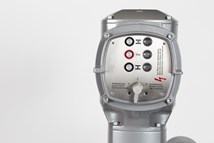Google Partners With Energy Dome
The companies are partnering to achieve carbon-free energy at scale deploying commercially proven CO2 battery long-duration energy storage technology.

Source: Energy Dome
Energy Dome, a long-duration energy storage company, has announced a global commercial partnership with Google using Energy Dome’s CO2 battery technology to enable carbon-free energy for the grids that power Google’s operations. Alongside the commercial agreement, Google has made a strategic investment in Energy Dome.
Solar and wind are among the most cost-effective and rapid ways of delivering capacity to the grid, but are inflexible due to their inherent intermittency. Long-duration energy storage resolves this flexibility constraint by storing solar and wind energy and dispatching it later when needed. For energy users such as Google, this technology enables “firm” electricity to meet demand in a reliable, clean and cost-effective way.
Google’s first commercial long-duration energy storage deal is part of a growing portfolio of advanced energy technologies needed to realize its ambition to run its operations on 24/7 carbon-free energy by 2030. The selection of Energy Dome’s proven and market-ready CO2 battery technology reflects its ability to be deployed at the scale, speed and affordability required on a global basis.
The CO2 battery is capable of continuously dispatching energy for periods of 8 to 24 hours, unlocking enough firm electricity to meet both the baseload and flexibility requirements of large energy users. The modular, site-independent product design uses off-the-shelf equipment without supply chain bottlenecks, ensuring a highly scalable solution to store massive amounts of energy efficiently and cost-effectively.
The mechanical components of the technology help stabilize the grid by providing natural inertia from rotating machinery. This is especially important given the concurrent ramp-up of solar and wind (which lack inertia) with the ramp-down of legacy fossil-fuel power stations, whose inertia is lost when the plants are decommissioned. The CO2 battery thus contributes to maintaining grid resiliency by acting as a shock absorber to smooth out sudden changes in frequency.
The commercial agreement aims to develop CO2 battery projects in all the key geographical strategic areas, including Europe, America and the Asia-Pacific region, to scale up deployment at a rapid pace to meet Google’s 2030 carbon-free energy goals. A pipeline of sites and projects has been identified in the partnership, which are currently in development and contracting stages.
Beyond the commercial collaboration, Google has also invested in Energy Dome. The investment coincides with the company entering a growth phase of commercial deployment, and multiple projects already contracted, including with Alliant Energy in the U.S., Engie in Italy, and NTPC in India.
By investing directly in the Milan-based scaleup, Google is reinforcing its long-term commitment to accelerating the commercialization of this proven technology. As a pioneer in the first generation of corporate power purchase agreements when solar and wind were in their infancy, Google brings both the customer perspective and experience to enhance the maturation and commercial scaling of CO2 battery technology, unlocking adoption benefits for communities and economies.
RELATED CONTENT
-
The Biggest Valves: Sizes Growing in Step with Greater Demand
Valve manufacturers that have the expertise, skills, equipment and facilities to produce large valves are rare.
-
PFAS Chemicals and PTFE: Should the Valve Industry Be Concerned?
Legislation moving through Congress could affect the future use of thousands of PFAS chemicals (per- and polyfluoroalkyl). The house passed H.R. 2467 in July of 2021 and, though the bill is general in nature, it assigns the responsibility to the Environmental Protection Agency (EPA) for determining which PFAS chemicals will be controlled or banned altogether.
-
Paint & Coatings
A walk through a typical valve distributor’s warehouse will yield a contrasting view of either silver or black products.










 Unloading large gate valve.jpg;maxWidth=214)